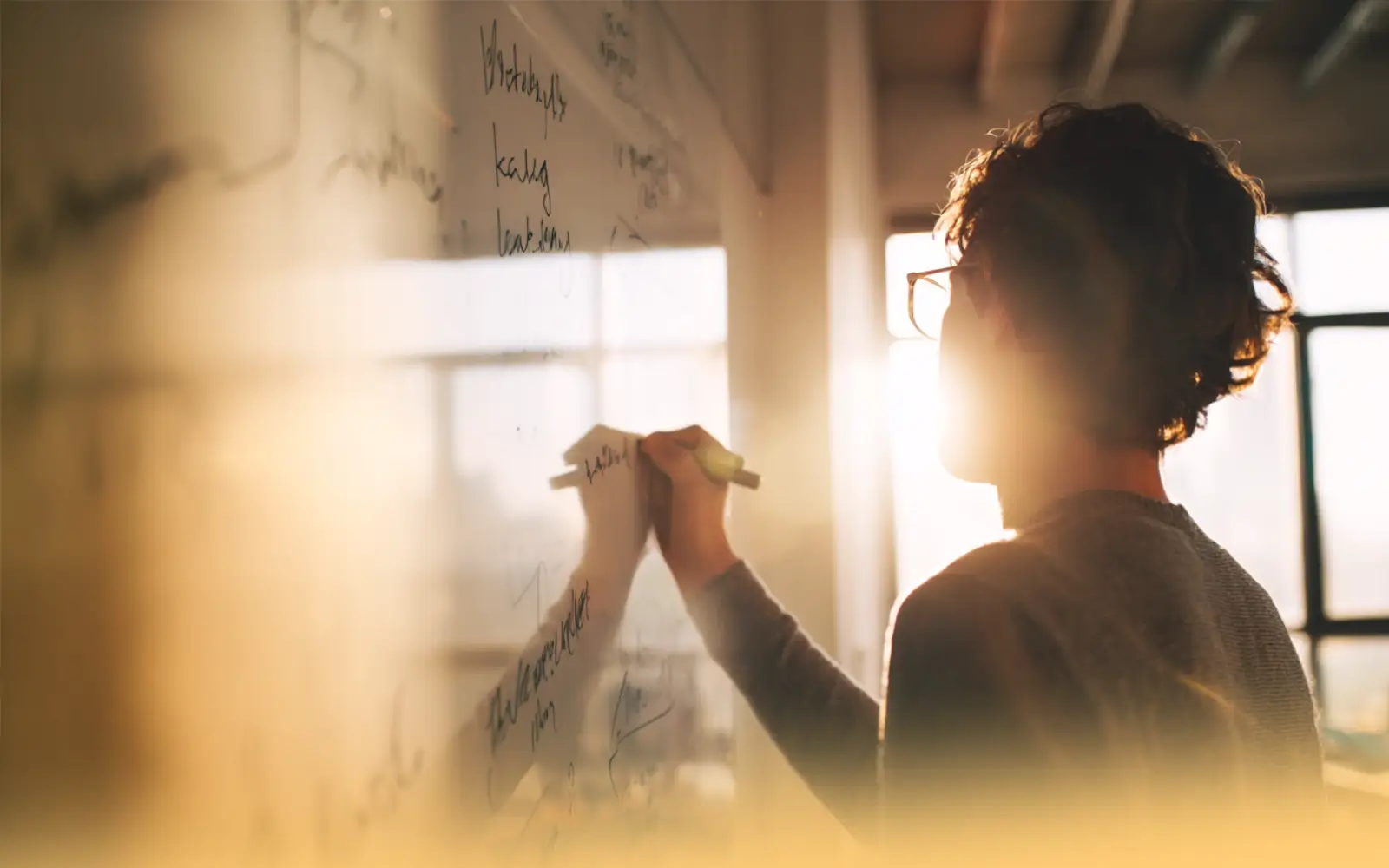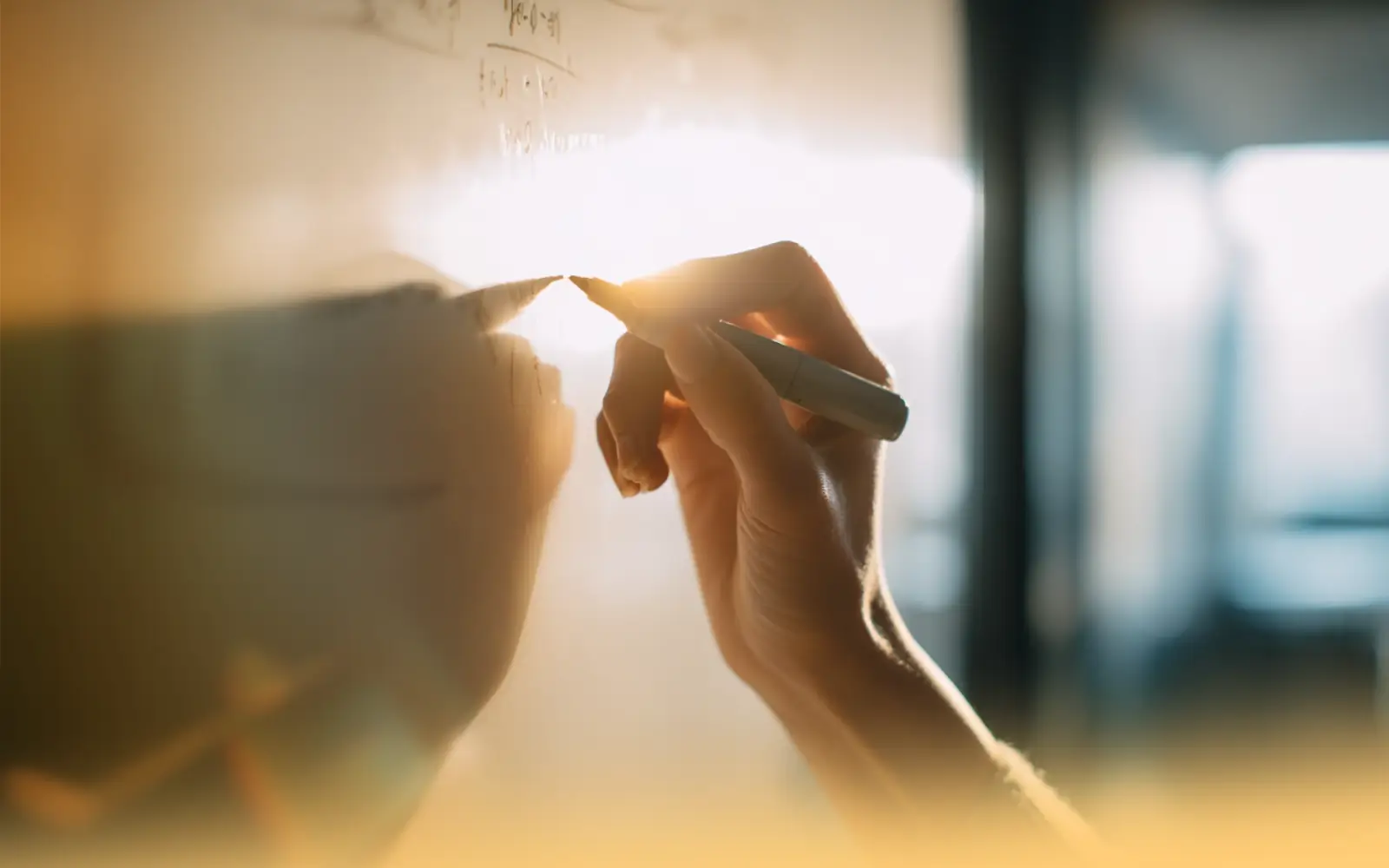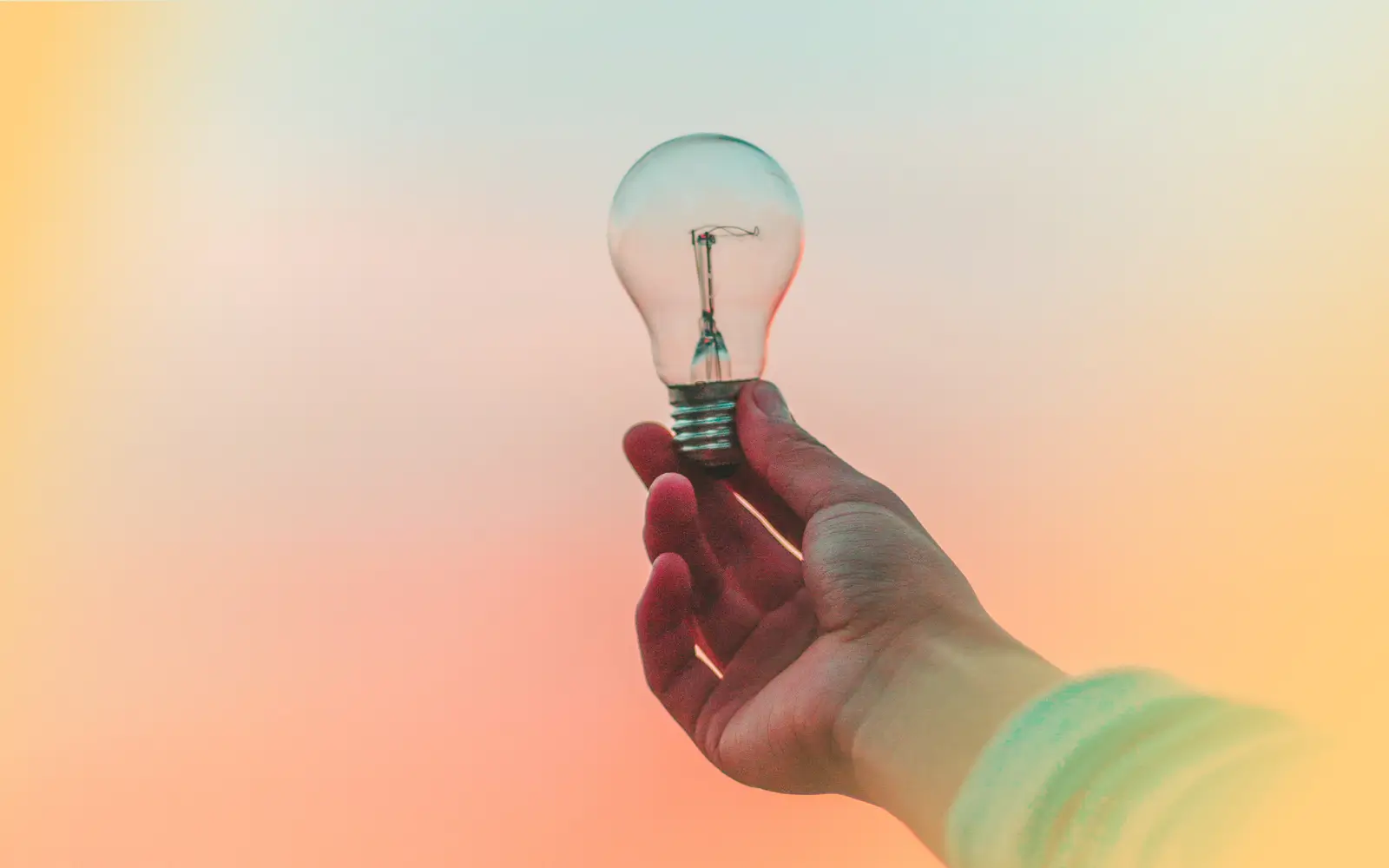We’ve been taught to hustle harder, stay busy, and measure our worth in hours. But what if the secret to real success is doing less? Peak Efficiency shows how today’s high performers have learned how to work less and achieve more—breaking free from busywork by ditching meetings, low-impact tasks, and habits that drain focus. By eliminating what doesn’t matter, they make room for what truly moves the needle: deep work, clarity, and meaningful results.
Inside this article:
TL;DR
Stop equating productivity with hours worked. The highest performers follow three rules: focus beats distraction, leverage beats labor, and rest enables performance. By protecting deep work, automating low-impact tasks, and prioritizing recovery—you accomplish more while working less.

1. The Hidden Cost of Busyness
Here’s what we’ve gotten wrong with busywork: being busy feels like productivity.
The Myth of “Being Busy” vs. Real Efficiency
We’ve glorified hustle culture and the grind—staying late, taking 15 meetings, answering emails at 10 PM. But busyness isn’t a proxy for impact. Some of the most effective professionals work 30-35 focused hours while others burn 60 with half the results. Peak efficiency means doing fewer things exceptionally well, not more things mediocrely.
Why Multitasking and Endless Meetings Kill Productivity
You’re context-switching more than ever. That constant toggling between tasks—email, Slack, meetings, back to your project—costs you focus and energy. Research shows multitasking can reduce productivity by 40%. When you jump between contexts, your brain burns through cognitive resources just recovering where you were. Studies show it can take up to 23 minutes to fully refocus after a distraction. Meetings are the worst offender. The average professional spends 23 hours per week in meetings, yet only 17% consider them productive.
Time-Wasting Habits That Don’t Move the Needle
Not all work is created equal. That update email, the “quick” status meeting, the spreadsheet reorganization—these tasks feel productive but rarely drive results. They’re what we call “busy work”—necessary-seeming tasks that don’t advance your actual goals. Over time, these habits accumulate, consuming 30-40% of your workday while delivering minimal impact.
Common time-wasters include:
- Status updates that could be emails
- Email management consuming more time than actual communication
- Administrative tasks you could delegate
- Perfectionism on low-impact deliverables
Key Takeaways: Continuous context-switching fragments your attention and prevents deep focus. Eliminating low-impact tasks frees up 10-15 hours weekly for meaningful work. Busyness isn’t a proxy for impact—peak efficiency means doing fewer things exceptionally well.

2. How Doing Less Helps You Achieve More
It sounds counterintuitive, yet the world’s highest performers know this truth: intensity beats duration every time.
Why working less makes you more productive. If you work 60 hours with 40% focus, you’re really working 36 focused hours. Someone working 30 hours with 90% focus accomplishes the same in half the time. The difference isn’t effort—it’s strategy.
Doing less strategically means:
- Eliminating tasks that don’t drive results
- Protecting cognitive energy for what matters most
- Building systems that multiply output without multiplying hours
- Recovering so your brain performs at peak capacity
- Being selective instead of reactive
Less doesn’t mean lazy—it means strategic. It means saying no to good opportunities to say yes to great ones. It means working on your highest-impact activities instead of busy work. It means protecting deep work time and resting so you return refreshed and creative.
Key Takeaways: Strategic reduction focuses your energy where it matters most. Quality of focus matters more than quantity of hours. Recovery enables breakthrough thinking.

3. Three New Rules of Peak Efficiency
Peak efficiency is about working smarter not harder and understanding what truly drives results.
Rule #1: Focus Is the New Productivity
With constant interruptions and shallow tasks, the real leverage lies in deep, sustained focus. When your attention is fractured, even simple work takes twice as long. High performers understand this: they don’t do more work, they do more focused work.
What Experts Say: Modern research supports that high-quality concentration yields outsized results. Studies show that professionals who block uninterrupted time produce better-quality output and solve harder problems. Cal Newport’s Deep Work demonstrates that deep, undistracted effort is increasingly rare—and therefore increasingly valuable.
Why it’s important to you: Working “less” can mean “fewer hours, but higher impact.” Three hours of focused deep work outpaces eight hours of fragmented attention. You accomplish more by protecting your focus than by adding hours.
Try this: Reserve blocks of 3-4 uninterrupted hours for your most important work. Turn off notifications, close email, eliminate distractions. Treat this time as sacred—non-negotiable focus time where deep work happens.
Rule #2: Leverage Beats Labor
It’s not about grinding harder—it’s about building automations, decisions, and systems that magnify your efforts. A single system can save hours every month, creating compounding time savings.
What Experts Say: The 80/20 principle—20% of activities produce 80% of results—is well documented. The Compound Effect by Darren Hardy shows how small leverage points create enormous outcomes. High performers don’t work more; they engineer systems that multiply effort.
Why it’s important to you: Free up time by removing, automating, or delegating low-impact work. Each system you build multiplies your capacity without adding hours.
Try this: Audit your tasks: which 20% produce 80% of outcomes? Eliminate, automate, or delegate the rest. Batch email into two windows daily. Automate recurring reports. Delegate routine admin work. Each system saves 5-10 hours monthly.
Rule #3: Rest Is the New Work Ethic
Efficiency doesn’t mean slogging all the time—it means resting, recovering, and refueling so your brain performs when you are working. The best performers understand recovery is when your brain consolidates learning and generates insights.
What Experts Say: Emerging research shows downtime and reduced overload are key to sustainable achievement. Matthew Walker’s Why We Sleep and Arianna Huffington’s Sleep Revolution both show that rest directly impacts creativity and problem-solving—rest isn’t laziness, it’s essential infrastructure.
Why it’s important to you: Working less can increase your capacity, creativity, and long-term wins. You produce better work from a rested mind than an exhausted one.
Try this: Build in real downtime. Take Fridays at 50% intensity. Protect your weekends. Step away daily. View rest as a strategic asset—not a luxury. A rested mind outthinks an exhausted one every time.
Key Takeaways: Focus: Three hours of focused deep work outpaces eight hours of fragmented attention. Leverage: One automated system saves 5-10 hours monthly and compounds annually. Rest: A rested mind outthinks an exhausted one—recovery is when breakthroughs happen.

4. Removing Wasted Time to Work Less
Turning theory into results takes more than good ideas—it takes smart, strategic action.
Audit Your Tasks
Identify High-Impact vs. Low-Impact Work. Start by tracking your time for one week. Document every task, its duration, and its impact on goals. This clarity reveals that 20% of your tasks drive 80% of results. Now you can ruthlessly cut the low-impact items.
Say No and Set Boundaries
Protect Your Focus and Energy. Every yes to something is a no to something else. High performers say no frequently. Set clear boundaries: “I can’t take new projects this quarter” or “I’m not available for meetings before 1 PM.” Boundaries protect your best work.
Batch, Automate, and Delegate
Maximize Efficiency with Systems. Three systems accelerate work:
- Batch: Group similar tasks. Answer all emails at 10 AM and 3 PM, not continuously.
- Automate: Use tools for repetitive work—scheduling, reporting, data entry.
- Delegate: Assign tasks others can do, freeing you for irreplaceable work only you can do.
Use Time Blocks and “No-Meeting Zones”
Focus Without Distractions. Time-block specific hours for specific work: 9-12 for deep work, 1-2 for meetings, 2-4 for deep work again. “No-meeting zones” are sacred—protected time for focused work. This structure eliminates decision fatigue and guarantees deep work time.
Key Takeaways: Measurement reveals where time goes—audit reveals what to cut. Saying no to distractions is saying yes to what matters. Systems compound—one workflow saves 10 hours monthly. Structure creates freedom—clear time blocks guarantee deep work.

5. The Sustainable Productivity Mindset
Success begins with how you think about work.
From Busyness to Clarity
Align work with goals. Clarity is power. Knowing your top three goals transforms everything. When a meeting request arrives: Does this serve my goals? When a project lands: Does this align? This single filter cuts 30-40% of obligations immediately.
Redefine Success
Results over hours worked. Stop measuring productivity by hours at your desk. Measure by outcomes. Did you move the project forward? Did you deliver the result? If yes—whether it took 4 hours or 8—you won. This mindset shift kills hustle culture and enables strategic thinking.
Celebrate Progress and Reflect Weekly
Keep improving smartly. Weekly reflection reveals what works. What did you accomplish? Where did time disappear? What could you eliminate? This feedback loop builds momentum and continuous improvement. Over months, refinements compound into dramatically higher efficiency.
Key Takeaways: Clarity eliminates noise—one filter will cut your obligations in half. Outcome-based thinking replaces burnout with sustainable work. Weekly reflection enables continuous improvement and growth.

6. What is the Future of Work?
The hustle narrative is shifting—and the winners will be strategic performers.
The Future of Work Belongs to Strategic Performers
The hustle narrative is shifting. The future belongs to professionals who work strategically—those who follow the three rules: focus beats distraction, leverage beats labor, and rest enables performance. You’ll notice these people aren’t frantically busy. They’re calm, focused, and consistently deliver. That’s the competitive edge.
This shift is accelerated by emerging technologies and collaborative approaches. AI and automation are reshaping which tasks matter. Rather than compete on speed or volume, strategic performers leverage these tools to eliminate routine work and focus on uniquely human contributions—creativity, strategy, and relationship-building.
Strategic Focus on Meaningful Projects and Impactful Tasks
When you cut the noise, you find clarity. When you eliminate low-impact tasks, you reclaim 10-15 hours weekly. Suddenly, you have time to think strategically, develop skills, mentor others, or work on projects that excite you. This freedom is mastery. You’re working at your highest capacity.
The future of work thrives on collaboration and co-creation. By automating low-value tasks and outsourcing routine work, you create space for:
- Strategic collaboration: Working with colleagues on high-impact projects or initiatives instead of endless status meetings
- Meaningful co-creation: Using AI tools to enhance your work—not replace it—allowing faster iteration and better outcomes
- Cross-functional partnerships: Building teams where diverse skills complement each other, multiplying collective intelligence
- Mentorship and knowledge-sharing: Contributing your expertise to develop others while learning from their perspectives
Professionals who embrace this shift—combining human judgment with AI efficiency, individual effort with team collaboration—will define the next decade of work. They won’t be the busiest. They’ll be the most strategic, most connected, and most impactful.
Key Takeaways: The competitive advantage shifts from activity to strategy and impact. Collaboration and AI tools, when used wisely, free time for work that only humans can do. The future rewards those who work smarter through focus, leverage, and strategic partnerships.
Ready to Work Less and Achieve More?
The secret to winning isn’t working harder—it’s working smarter through the three rules of peak efficiency: focus beats distraction, leverage beats labor, and rest enables performance. By protecting deep work, building systems, and prioritizing recovery, you’ll accomplish more while working less.
Next Steps
- This week: Track your time. Document every task and its impact for three days.
- Next week: Cut two low-impact tasks. Say no to one new request.
- Month one: Implement one system—automate or batch emails, create no-meeting zones.
- Ongoing: Weekly reflection. Apply the three rules: focus, leverage, rest.
Start today with one small change: block one hour for deep work, automate one task, or protect one evening for rest. Small shifts compound into the sustainable productivity that will drive your success in the weeks, months and years to come.
Frequently Asked Questions
How can I really work less and accomplish more?
The idea of work less accomplish more isn’t wishful thinking—it’s the foundation of modern productivity. The new rules of work emphasize smart work strategies and intentional work that prioritize results over hours. Peak efficiency comes from focusing your energy on high-impact tasks, applying strong time management strategies, and embracing rest as part of performance. When you work smarter not harder, you achieve sustainable productivity and long-term success without burnout.
What’s the difference between being busy and being productive?
Busyness often feels like progress, but true productivity is about meaningful results. A strong productivity mindset helps you focus on outcomes, not just activity. The key to efficiency at work is identifying the 20% of actions that drive 80% of results—then eliminating distractions that waste time and energy. By adopting effective work habits for success and focusing on intentional work, you boost focus and productivity while protecting your energy and work life balance.
How do I protect deep work time from meetings and interruptions?
Deep work is the cornerstone of cognitive productivity and focus management. In the modern workplace performance environment, constant meetings and notifications fragment attention. To regain focus and flow at work, block out non-negotiable deep work hours and treat them as critical appointments. Turn off notifications, communicate boundaries, and create “no-meeting zones.” Research shows that a few hours of uninterrupted focus can outperform an entire day of fragmented multitasking.
How can I reduce overwork and prevent burnout while staying competitive?
Burnout prevention is essential for performance improvement and personal efficiency. The science of working smarter proves that rest and energy management enhance creativity, decision-making, and long-term motivation. Achieving work life balance for high achievers doesn’t mean losing your edge—it means maintaining consistent performance by managing your limits. Modern productivity techniques emphasize sustainable systems that help you reduce overwork, maintain focus, and thrive in demanding environments.
What productivity systems actually work?
To work smart and achieve more with less effort, implement a few simple productivity systems:
- Batch communication – Check emails twice daily to regain focus and flow.
- Automate workflows – Streamline repetitive tasks and reporting.
- Delegate – Free up time for deep work and high-value projects.
- Time-blocking – Schedule focused blocks for intentional work.
- Weekly reflection – Review what drove results versus what only kept you busy.
These smart work strategies lead to sustainable productivity, greater balance, and lasting success. By mastering modern productivity and efficiency at work, you’ll quickly see why working less makes you more productive.
Related articles
Time Management: Mastering the Art of Prioritization
Master the essential skill of prioritization to eliminate distractions and focus on what truly matters for peak performance.
Hate Your Job? 7 Clear Signs It’s Time to Move On
Recognize when your current role drains your focus and energy, and explore how a career transition might unlock peak efficiency.
Transform Your Career with a Growth Mindset: Key Strategies for Success
Shift your perspective from fixed limitations to expansive possibilities, enabling smarter work choices and strategic growth.
Further reading
“Deep Work: Rules for Focused Success in a Distracted World” by Cal Newport
Actionable strategies for protecting deep work time and eliminating shallow tasks that drain focus without producing results.
“Atomic Habits” by James Clear
Focus on systems and automation by showing how small, consistent habits compound into massive productivity gains.
“Why We Sleep” by Matthew Walker
Demonstrates how sleep and recovery directly enhance cognitive function, focus, and creative problem-solving.
“The Sleep Revolution” by Arianna Huffington
Challenges hustle culture, showing how prioritizing sleep and recovery transforms both wellbeing and professional results.
“The Compound Effect” by Darren Hardy
Shows how small, consistent actions and systems create exponential returns over time.





